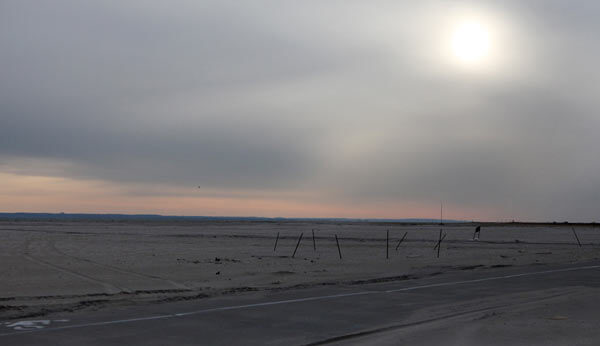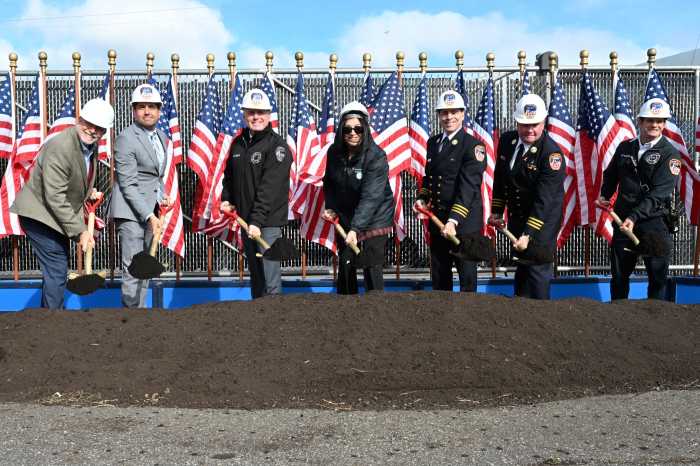By Christina Santucci
Mayor Michael Bloomberg wants the city to prepare for storms far worse than Hurricane Sandy, which devastated parts of the Rockaways and southern Queens.
And at a presentation Tuesday, he outlined his elaborate plan on how to protect the city’s waterfront from future flooding and other effects of climate change.
Sandy cost the city $19 billion in damages, but a storm mid-century could cost the Big Apple five times that amount, he warned.
“Whether you believe climate change is real or not is beside the point — we can’t run the risk,” Bloomberg told the crowd gathered at the Brooklyn Navy Yard.
Along coastal areas, he called for beaches to be widened and sand dunes to be built. Part of the plan is to restore the natural wetlands in Jamaica Bay.
Breezy Point, which juts out into the Atlantic Ocean on the western tip of the Rockaway Peninsula, is slated to receive a double-dune system, which could be implemented in the rest of the Rockaways if successful. The placement of breakwaters further to the west of Breezy Point is also being considered.
Storm surge barriers at Newtown Creek and at the mouth of Jamaica Bay figure prominently in the plan as a way to prevent flooding from various bodies of water.
“Water entering through these back doors accounted for a lot of flood damage. And the biggest back door of all, of course, was Jamaica Bay,” he said.
A barrier at Jamaica Bay would protect communities of Howard Beach and Broad Channel, according to hizzoner.
He is advocating for higher construction standards for new properties and new zoning that would facilitate elevation of buildings above the floodplain, as well as a $1.2 billion incentive program so that property owners, who may not have qualified for Sandy relief funds, put flood protections into vulnerable sites.
Once the Federal Emergency Management Agency’s new flood maps, which were released Monday and predict that by 2050 up to one quarter of the city’s land area will be in the floodplain, become official, insurance rates will skyrocket, the mayor said.
But those rates will drop significantly if a structure located in the floodplain is elevated, he said.
Bloomberg plans to call on the federal government to give a partial reduction in insurance rates to owners who install flood-related improvements, like raising electrical systems, even if the structure is not elevated.
The 430-page report, “A Stronger, More Resilient New York,” includes more than 250 specific recommendations, such as the installation and reparation of bulkheads on the bayside of the Rockaway Peninsula, Broad Channel and Howard Beach.
The report lays out Bloomberg’s plan to strength 15 areas, including utilities, fuel and food supply, healthcare, transportation and telecommunications, over the next 203 days and into his successor’s mayoral administration.
As part of the Sandy plan, the city would force new medical facilities to be better prepared for flooding as well as to have access to backup power and other critical systems in the event of any weather emergency.
“We’ll require that existing facilities meet many of the same benchmarks by 2030, and today we’re proposing a $50 million incentive program to help some of the most financially challenged nursing homes and adult care facilities meet those requirements much sooner,” he said.
Bloomberg praised Con Edison for investing in its infrastructure, which he credited with preventing major blackouts in the last few years, but said the benchmarks of utilities’ success exclude storms and do not take into account climate change.
“We have to hold companies accountable for keeping the lights on, the phones working and the heat on, especially during emergencies,” he said.
Bloomberg also addressed the gasoline shortage in the weeks following Sandy, attributing it to a breakdown in the regional supply chain. He vowed to hold companies accountable in the future.
“Just because the companies are located outside New York City doesn’t provide an excuse. We still depend on them and so it’s up to us to work with them to ensure they can meet our needs,” Bloomberg said.
The mayor estimated the total cost of everything proposed would come to $19.5 billion, with nearly three-fourths of that figure already included in relief and city capital funding.
“Approximately $10 billion of that is covered by a combination of city capital funding that’s already been allocated and federal relief and other monies already designated for the city. Another $5 billion should come from the federal government in subsequent rounds of Sandy relief that has been appropriated by Congress, as well as through FEMA risk mitigation funding and other sources,” he said.
As for the rest, he plans on pressing the federal government for as much money as possible.
Over the next 200-plus days, the mayor hopes to accelerate implementation of the plan by launching studies, beginning to design work for capital projects, making changes to building and zoning codes, working to get federal recovery money for the city, helping homeowners rebuild their houses and assisting business owners in receiving loans and grants.
Bloomberg said whether the rest of the plan is implemented is up to the next mayor.
“The plan is incredibly ambitious — and much of the work will extend far beyond the next 203 days. But we refused to pass responsibility for creating a plan onto the next administration,” he said.
Reach managing editor Christina Santucci by e-mail at timesledgerphotos@gmail.com or by phone at 718-260-4589.




































